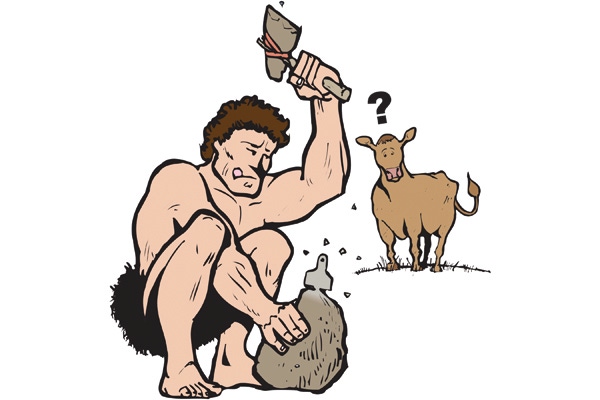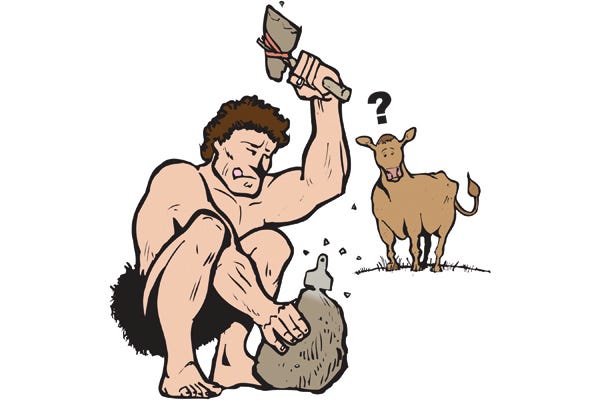Science and technology must be evaluated in the context of risk and benefit — their contribution to the total well-being of people — not on ignorance, fear and the precautionary approach.
September 1, 2013

We hear concerns voiced every day in the industry media about the challenges of drought, the high prices of feed and other inputs, increasing regulation, dwindling cattle numbers, consumer resistance to beef prices, healthy diet implications, etc. The negativity is almost enough to preclude us from remembering all the benefits that science and technology have provided society, and the future benefits that mankind’s ingenuity — if left to function freely — is sure to provide us in the future.
A look at past technology
So what are some of the benefits to the U.S. beef industry, and consumers, as a result of the science and technology of the past?
Many of these benefits have become part of the everyday fabric of modern beef production, and are taken for granted. But consider the great inroads made in the science of feed efficiency of beef production, and improved animal health and welfare, that have allowed decreased land use and environmental improvements, decreased the industry’s carbon footprint, and allowed for greater beef competitiveness and leaner products.
These are real benefits, not unsupported or perceived benefits. Some examples of these technologies include semen preservation and artificial insemination (AI), a definition of nutrient requirements and feed energy systems, feed processing, EPDs, hormonal implants, ionophores, antibiotics, vaccines, parasiticides, estrus synchronization, embryo transfer, ultrasound and in-utero effects of nutrition on carcass composition.
How about the irradiation of beef, both of ground beef and whole carcasses, which could greatly enhance beef safety if promoted by the industry and processors, and accepted by consumers?

Illustration by Dennis Wolf
A look at future technology
Research will continue because people are curious, innovative and entrepreneurial. In the future, we can expect that DNA technology (gene mapping or gene/trait marking) will greatly enhance the accuracy of genetic improvement, provided that the important traits are selected. These include tenderness with sufficient marbling to achieve the “window of acceptability” indicated a few years ago by Texas A&M University. In addition, feed efficiency, reproductive performance and disease resistance will be important.
Genomic-enhanced EPDs will greatly promote the rate of genetic improvement in beef cattle of the future. Cloning has the potential for duplicating desirable, as well as undesirable, traits. And transgenesis targets specific gene modification with the potential to develop animals with disease resistance, reduced environmental impact, and improved production and carcass traits.
Further refinements in the timing of estrus and AI will improve conception rates and increase the use of these tools, while nutrition and energy systems will be more specific for productive functions and gene expression. Gastrointestinal microbiology will be better understood, which will result in enhanced fiber digestibility, decreased methane release, improved feed efficiency, decreased animal waste and enhanced beef safety.
We can expect further genetic modification of plants, which will result in feeds with greater nutrient value and reduced anti-nutrient factors. Analytical procedures for feed analyses will be more accurate and integrated for predicting animal performance. And pharmaceutical research will continue to create products to improve beef cattle health (parasiticides, vaccines, antibiotics and probiotics), feed efficiency and well-being.
Advances in molecular diagnosis will allow earlier and more specific disease identification. Immune system studies will identify more specific antigens for vaccines with greater efficacy. And stem-cell and organ culture have the potential to improve animal health, as well as boost the role of animals in human health advances. Muscle cell culture could even result in formed beef products.
Remote sensing will bring about improved management and grazing efficiency of public lands, range and pastures. Infrared tomography will improve identification of cattle with elevated body temperature, thereby improving animal health and well-being.
At the beef production level, information technology will bring forth integrated practices that combine genetic selection, precision nutrition, health, diet formulation and feeding schedules, implant strategy, projected gain and feed efficiency, weather effects, marketing strategy to achieve specific grade and yield, and closeout summaries. This will require people trained in not only information technology, but also people who understand cattle, and the variations in cattle and health requirements. Will our colleges and universities still be the major source of people who can fill this need?
The nutritional value of beef and animal products in general has been known and promoted for some time. These foods are nutrient-dense, meaning they contain many nutrients (e.g., protein, iron, zinc, vitamin B12) in high amounts relative to their caloric value.
However, health headlines have overemphasized cholesterol and saturated fat to the point that the average consumer doesn’t appreciate their nutrient density. “New science,” however, points out the taurine content in beef that may improve human cardiovascular health, and the fatty acid composition of beef fat — 70% of which consists of stearic (saturated) and oleic (monounsaturated) acids. Both of these lower blood triglycerides, low-density lipoprotein (LDL, the so-called “bad” cholesterol) and possibly raise high-density lipoprotein (HDL, the “good” cholesterol).
Will progress be allowed?
However, the future of beef technology and agricultural technology in general, unfortunately, will rest more on the characterizations of anti-science activists, media and marketers than on the science itself. Will cattle producers be permitted to apply new technologies in the future? Most technology advancements must be approved by the appropriate government agency, whether that’s the Food and Drug Administration, the Environmental Protection Agency or some other body, before its application based on scientifically proven safety and efficacy of the technology advancement. How will this regulatory oversight change?
It is estimated that 70% of the increased need for food required for the expanding U.S. and world populations will depend on technology improvements. Therefore, it will be up to scientists and producers alike to better explain these new technologies and their roles in the more efficient utilization of resources, their environmental impact, and the need for providing abundantly more nutritious, economical food for the increasing number of people — especially those that are dependent on others for their food.
Today, there is much emphasis on the importance of education, science and math to the future of this country. But disinformation is also a crucial challenge that must be addressed.
As President Ronald Reagan once said of his political opponents: “The trouble with our liberal friends isn’t that they’re ignorant. It’s just that they know so much that isn’t so.” In other words — misinformation.
Legal challenges are also diverting the application of technology in beef production and agricultural production in general, and these challenges are often based on biased viewpoints, trade barriers and market positions.
Science and technology must be evaluated in the context of risk and benefit — their contribution to the total well-being of people — not on ignorance, fear and the precautionary approach. Otherwise, the challenge of feeding and clothing the world’s growing billions of people will be even more daunting.
For an enlightened presentation of science-based information vs. the precautionary approach, everyone should read the Council for Agricultural Science and Technology’s issue paper “Impact of the Precautionary Principle on Feeding Current and Future Generations.” It’s available for free downloadat www.cast-science.org.
Rod Preston, Ph.D., is Thornton Endowed Professor Emeritus at Texas Tech University. Robbi Pritchard, Ph.D., is a South Dakota State University distinguished professor of animal science.
You might also like:
Crossbred or Straightbred? Tom Brink Says Thats Not The Question
3 Tips For Increased Beef Cow Profits
60+ Stunning Photos That Showcase Ranch Work Ethics
You May Also Like



